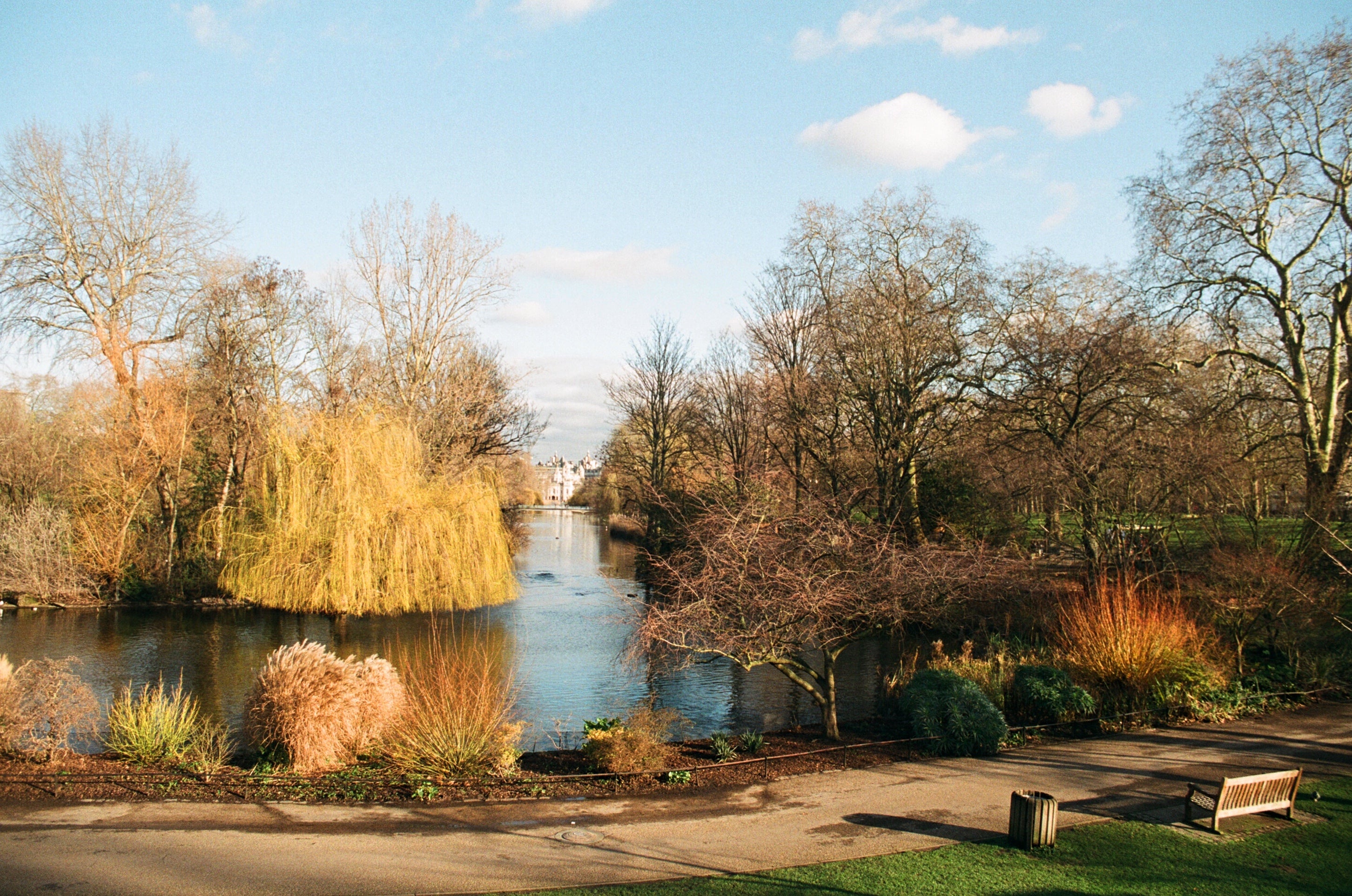
Matt Collins explores the Garden Museum's latest exhibition, tracing the remarkable history of London's Royal Parks.
Many years ago, when I came back to London as a gardener seeking employment, I had my eyes set on the Royal Parks. My horticultural aspirations peaked at imagining life working in St. James's in particular; tending its species trees, mulching the mixed bedding displays; meeting friends for lunch on a bench in this institutional oasis within London. Why St. James's Park I can't fully remember perhaps the birdlife, the lake, or the very central location as in fact, gardening in any of the Capital's eight Royal Parks would have fulfilled that particular desire. The reason is simple. Not only is London blessed with impressive, enchanting parks, but these places have, over the centuries, transitioned into magnificent public gardens: home to exotic trees and global planting schemes, and a welcome space for visitors and locals alike.

The fascinating evolution from gated royal romping grounds to gardens for the garden- less' is the subject of the Garden Museum's current exhibition: Play, Protest and Pelicans: A People's History of London's Royal Parks. A neatly curated collection of paintings, photographs, architectural designs and memorabilia tell a story that begins with the deer parks of the monarchy those founded by Charles I and Henry VIII like Richmond and Hyde Park. We see a grand view of Greenwich painted by 17th century artist Hendrick Danckerts; the French influence on Charles II's St. James's layout, and pioneering landscape designs by John Nash. We learn of numerous and unlikely occupants of Hyde Park over the years, from the military wading the Serpentine in training for WWII to Rolling Stones concerts, leopards on leads and free speech at Speaker's Corner. Changes of land use are a revelation also: Richmond and Bushy Parks being turned over to potato growing during the Dig For Victory campaign, for example, or the open air classes held for school children suffering form tuberculosis.


This exhibition draws pertinent attention to the great importance of parkland in cities. With the Royal Parks falling to governmental administration (formerly The 'Royal Parks Agency') and more recently instated as a charity, some 5,000 acres of greenery became accessible not just to the privileged notables given keys to concealed private gates but to all. 77 million visitors a year, in fact, which is a staggering figure. The weekend crowds seeking respite in St. James's today are wonderfully mirrored in a painting by an unknown artist of an 18th century St. James's with visitors socialising, embracing, drinking and reclining under dark avenues of trees. The Mall was then the spot to be seen in fashionable society. It was in this spirit that a seasonal public ice rink was made of the serpentine and tropical animals were brought into Regent's Park.

All Londoners will have a favourite among the eight Royal Parks, as will anyone who has visited the Capital. Having lived in all its four corners, my own allegiances have switched many times over. I was pushed in a pram around Kensington Gardens but in Richmond, in my twenties, I loved the park's cycle paths, deer and plantation garden. Spectacular autumn foliage pulls me through the gates of Regent's Park, though, now living in the South East, I regularly wander to Greenwich for its unrivalled Thames view and avenues of sweet chestnut.


On the subject of trees, another, subtler historical shift is presented in the Garden Museum's exhibition. Looking at pictures predating the mid- 20th century it is somewhat saddening to see how prominent British elms once were within London's green spaces. It is a tree already fading from memory, ravaged by Dutch Elm disease in the years following the Second World War, however its presence a distinctly elegant, architectural physique in many of this exhibition's paintings is a poignant reminder of the tree's former spread and splendour. Such as in An Airing in Hyde Park (1796), which shows a gathering of gentry under lofty elm boughs, and, above it, Greenwich Park festooned with elms running off to the distance in View From Tree Hill (c. 1734). It is thought that around that time over half the park's trees were elms; all of them wiped out by the 1990s.

After viewing the exhibition I took myself off for a royal walk, crossing over the river and into St. James's Park, and on through the seamless leafy corridor of Green Park, Hyde Park and Kensington Gardens, along which one can remain, more or less, beneath uninterrupted canopy. I tempered the loss of elms with a host of mature and diverse species: great Mediterranean holm oaks, American swamp cypresses, weeping birches and boisterous willows, bright with golden winter stems. Near Hyde Park Corner I stopped at a giant Zelkova a robust, Caucasian member of the elm family whose fluted trunk supported a forest of entwined limbs. This dark mass of vertical branches, like waving seaweed, is an astonishing sight, but just one of many among the arboreal treasures of these institutions. Like the cedars and veteran oaks of Richmond Park, or the lakeside dawn redwoods in Regent's Inner Circle. They are trees once exclusive to wealthy estate collections: London's Royal Parks exhibition is a gentle reminder not to take them for granted.

Words & colour photography by Matt Collins. Play, Protest and Pelicans: A People's History of London's Royal Parks is on exhibit at the Garden Museum until 9 Feb, 2020.
Image credits: Leopard cub, c.1968. In the 1960s Angela Mcwilliams could be seen taking her pet leopard for a walk in Kensington Gardens (the 1976 Endangered Species Act put a stop to exotic animals being sold in Knightsbridge and elsewhere); Man feeding pelicans, 1936; US soldiers training in the serpentine, 1943; Unknown artist, St James's Park, c.1700; London transport poster of Richmond, courtesy of the Hearsum Collection.
Add a comment